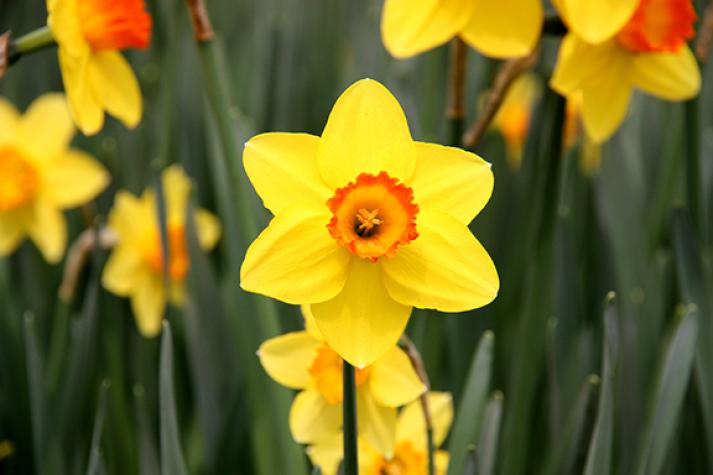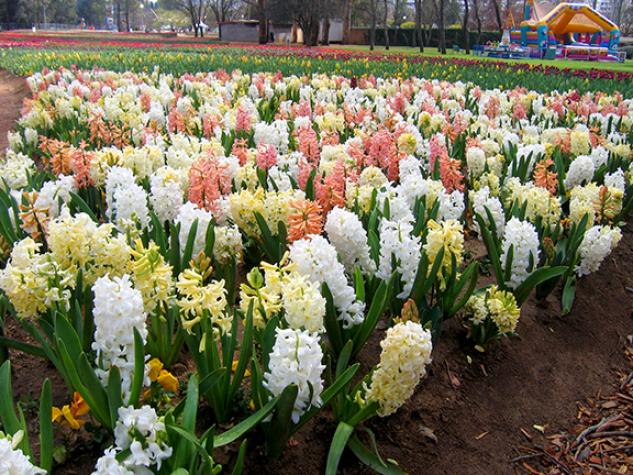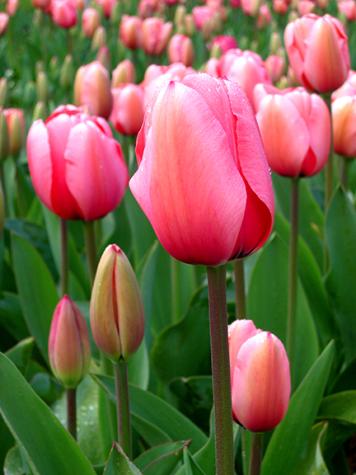Heralds of spring need care and feeding.
COLUMBIA, Mo.– The long, harsh winter coupled with last fall’s drought caused a lot of damage to evergreen trees.
The dead branches of injured evergreens, which can harbor fungi and decay, should be removed, says Hank Stelzer, University of Missouri Extension associate professor of forestry.
“See if there are any green buds along that branch,” Stelzer says. “You’ll want to go above that green bud and prune off there.”
Watering during the summer can help prevent winter damage.
“Make sure it has about an inch of water a week, because that is making sure the root system is healthy,” he says. “Having a healthy root system is better going into winter, whether it’s an evergreen or a hardwood.”
Periodic watering during the fall and winter when the ground is not frozen can also be beneficial, as evergreens will require water during the dormant season, Stelzer says.
“If the ground doesn’t have adequate moisture, evergreens will have winter injury and dry out, which is the brown foliage you see in the spring,” he says.
To protect roots and conserve moisture, Stelzer recommends applying mulch in a 3- to 6-foot ring around the tree.
“The wild temperature fluctuations that we see during anytime of the year can really have a significant impact on the root system,” Stelzer says. “You want to keep your trees healthy during the growing season as well as during the dormant season.”
COLUMBIA, Mo. – What winter-weary heart is not thawed by the arrival of sunshine-yellow daffodils? Unfortunately, after their blooms fade, these harbingers of spring often become afterthoughts.
After spring bulbs flower, however, their greatest work lies ahead, and they need care to ensure that they will return in full glory next year.
“We need to encourage the spring bulbs after they’ve flowered to remain green and photosynthesizing for as long as possible,” said David Trinklein, horticulture specialist for University of Missouri Extension.
Nurturing spring bulbs
Spring-flowering bulbs include narcissus (daffodils), tulips and hyacinths. Trinklein says people often mow down their daffodils after they flower, but that’s a bad idea. He says these cool-season plants need their leaves so they can photosynthesize until summer heat finishes them for the year. The photosynthesis allows the plant to store food in the bulb for next year’s flowers.
Rather than mow them down, some people will tie them up. Trinklein says that’s a bad idea too.
“When you tie them up into a column, only the outer leaves will get sunlight, and that light will be at a poor angle,” he said. “You might as well cut them off and suffer the consequences.”
To help prepare spring bulbs for next year, remove this year’s spent flowers. “We don’t want the plant putting its energy into making seed that you will not use,” Trinklein said.
Why don’t we use the seeds? Trinklein says it will takes about three years or more before the plant grown from a seed will be mature enough to produce a flower. The seedling will also be genetically different from its parents, thanks to cross-pollination. He says the result will often be less than pleasing.
This time of year you need to feed spring bulbs well.
“After flowering, fertilize with something that’s high in phosphorus. Bone meal is an excellent organic choice for bulbs,” Trinklein said. “Limit nitrogen because too much can lead to bulb rot.” If you would rather use an inorganic fertilizer, Trinklein recommends 5-10-5, which is relatively low in nitrogen, high in phosphorus and has modest amounts of potassium.
Avoid transplanting these bulbs in the spring, he says. Even if you’re very careful, you will lose roots when transplanting. In the spring, we need all the roots on the plant so they can to take up nutrients to create next year’s flower.
Spring-flowering bulbs vs. Missouri heat
Spring-flowering bulbs are not native to Missouri and differ in their ability to adapt (or naturalize) to our conditions. Some species are better at this than others.
“Because of their ability to tolerate warmer temperatures, daffodils are the best at naturalizing in Missouri,” Trinklein said. “They do a fairly decent job of enlarging the bulb clump and remaining attractive year after year.”
Tulips are a bit less happy under Missouri conditions because it gets too warm rather quickly, Trinklein said.
The worst of the three, when it comes to naturalizing in Missouri, are the hyacinths. They cannot tolerate warm weather. The first year you’ll get beautiful, large columnar scapes packed full with hyacinth flowerets, Trinklein said. Then they will go downhill.
“Under Missouri conditions they will rarely regain their original beauty,” he said. “For this reason, hyacinth are sometimes treated as annuals, albeit expensive ones.”
By giving spring bulbs a little care and nurturing, their beautiful flowers will herald the end of winter for you for many years to come.



